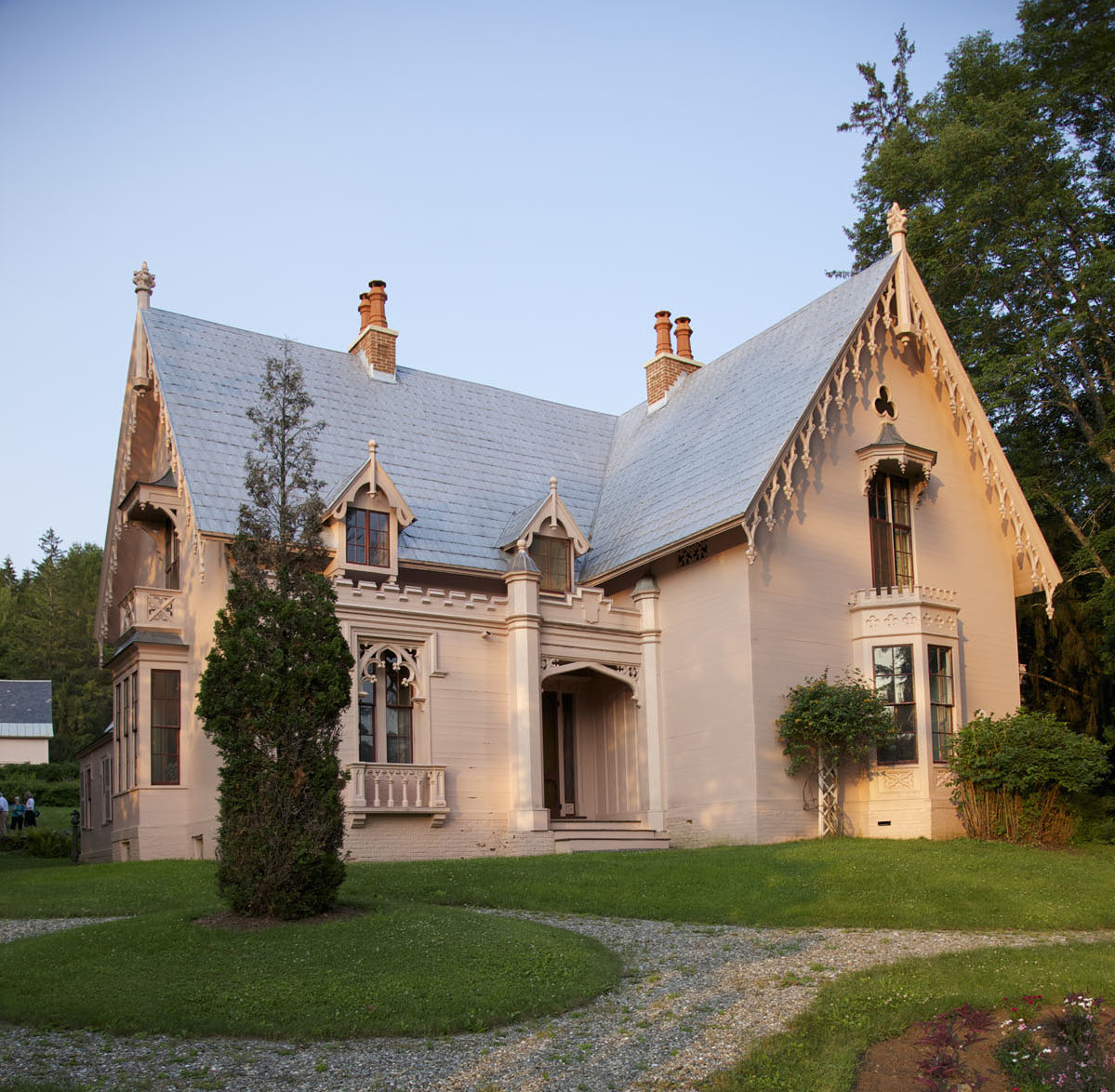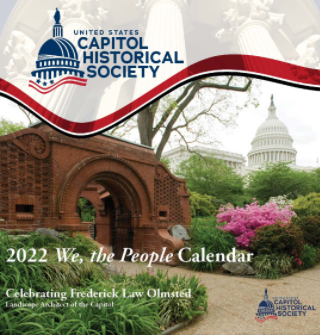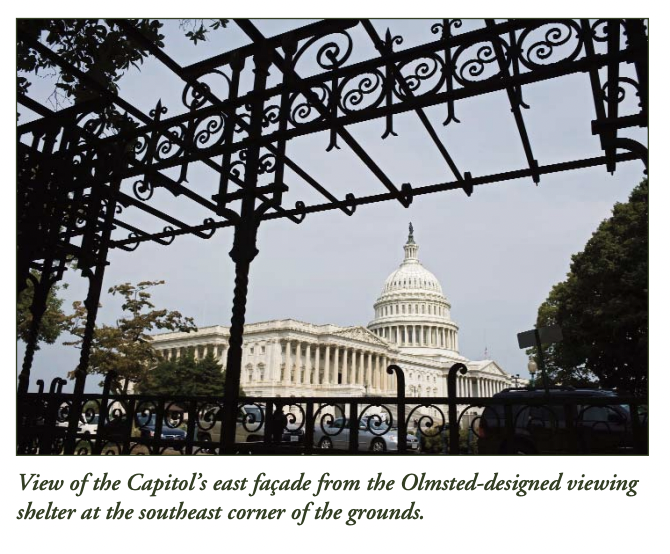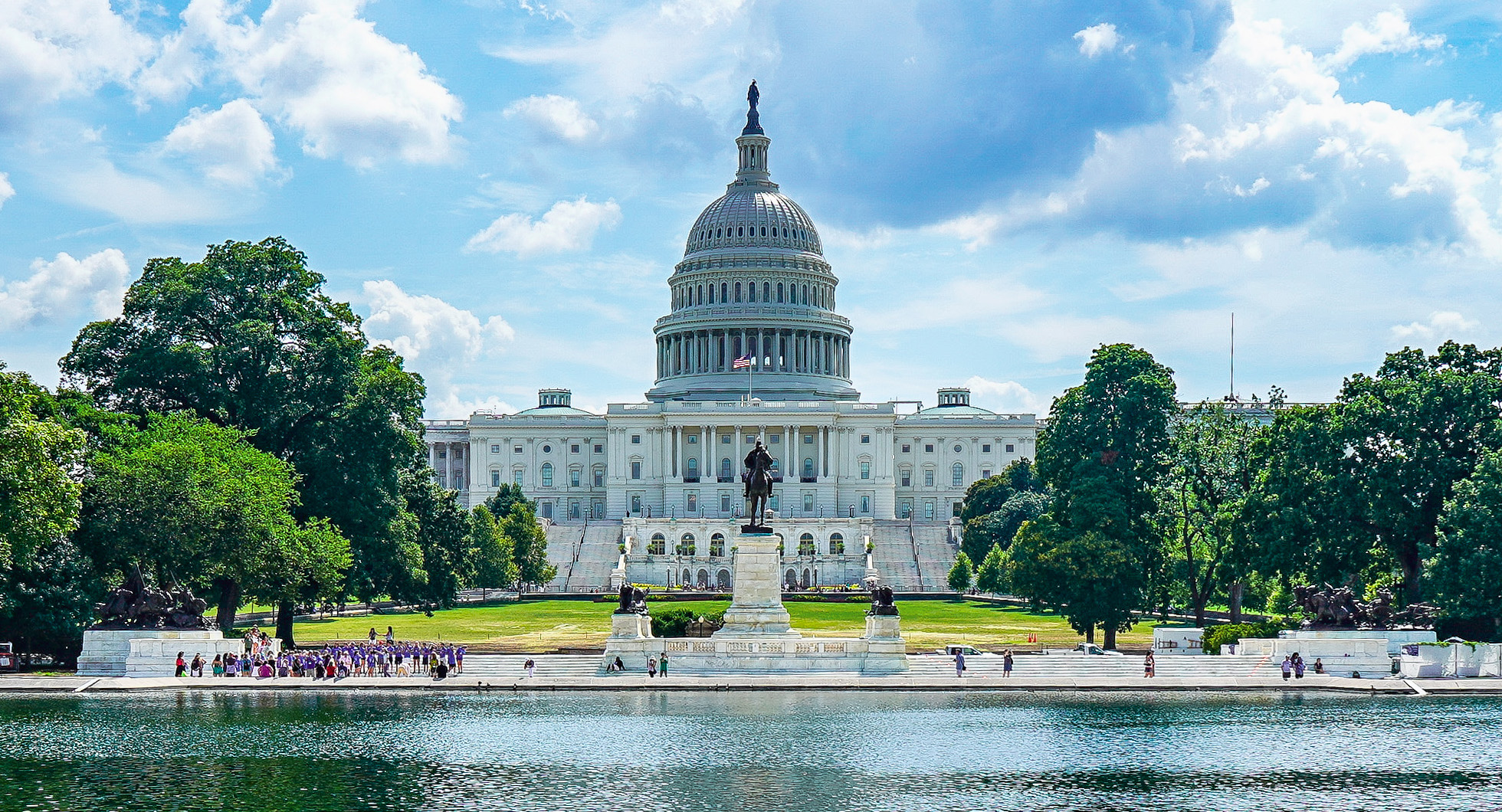
The U.S. Capitol grounds, as we see them now, were designed in the late 19th century by Frederick Law Olmsted. Many people know that Justin Morrill was important in Olmsted’s landscaping of the Capitol grounds. But what exactly did Senator Morrill do?
First, Senator Morrill set the stage for a new landscape design for the Capitol grounds. Second, he recruited Frederick Law Olmsted to be the designer of the new Capitol grounds. Third, he got Congress to create the job and to employ Olmsted – and only Olmsted – to create the design and first direct its realization. Fourth, each year for 19 years, he led the effort in the Senate to ensure Congress funded Olmsted’s plan to its completion.
Here’s how it all came about!
The Capitol grounds have not always been the neat near-rectangle we know. In 1872, they didn’t include the northeast and southeast corners. Multiple bills to enlarge the grounds had failed to pass. Morrill, chair of the Senate buildings and grounds committee, took a new tack. He added Capitol grounds enlargement to an annual appropriations bill. It worked. Congress approved the Capitol grounds enlargement in 1872. By early 1873 the Capitol grounds were enlarged. Morrill had set the stage.
Next, on May 6, 1873, Morrill wrote to Frederick Law Olmsted. “The additions to the grounds of the Capitol make it important that they should be laid out with proper skill… I hope you may feel sufficient interest in this rather national object – not to have it botched – to be at the trouble of a flying trip here.” Olmsted, ill for much of 1873, eventually visited Washington in January 1874, then wrote Morrill a long analysis of what was needed. Olmsted was recruited.
Now Morrill had to create the job and make sure Olmsted got it. On January 22, 1874, he introduced a bill, with appropriations, directing the Senate and House committees on buildings and grounds to procure a survey of the Capitol grounds and to employ Olmsted, specifically, to plan their improvement. The bill passed on March 21, 1874. Six days later, Morrill and the chair of the House committee agreed to Olmsted’s terms for the job. With funding, Olmsted now had the job of designing the Capitol grounds.
Morrill then had to make sure federal appropriations continued. He amended an upcoming appropriations bill, adding funds “For improvement of Capitol grounds, according to the plans and under the general direction of Fred. Law Olmsted.” Enacted on June 23, 1874, the bill was the first of some 20 appropriation bills that Morrill helped shepherd through Congress to complete Olmsted’s Capitol grounds design.
The Friends of the Morrill Homestead are partnering with Olmsted 200 to celebrate Olmsted’s achievements – and to honor Justin Morrill’s role in making possible one of Olmsted’s great works.

This blog was submitted by Roger Walke, a board member of the Friends of the Morrill Homestead. This article first appeared in The Morrill Homestead Chronicle, Spring 2022.
The Friends of the Morrill Homestead are based in Strafford, Vermont. The Friends’ mission is to work closely with the Vermont Division for Historic Preservation to foster a greater awareness of the life and legacy of Justin Smith Morrill and to preserve and maintain the Morrill Homestead in Strafford, a National Historic Landmark and State Historic Site. Morrill’s best-known legacy is the Land-Grant College Act of 1862 and its successor Act of 1890. The Friends work to increase awareness of Morrill’s legacy in higher education – as well as in dismantling slavery, ensuring equal rights for all, and beautifying the nation’s capital – and also aware of his passion for gardens, landscape, and agriculture. In doing so, the Friends strive for historical accuracy, including both the good that Morrill’s vision has produced and the truth about injustices and unfulfilled promises. The Friends offer Morrill-related events at the Homestead annually, including several in 2022 related to Frederick Law Olmsted and Morrill. Please visit our website at https://www.morrillhomestead.org/.











